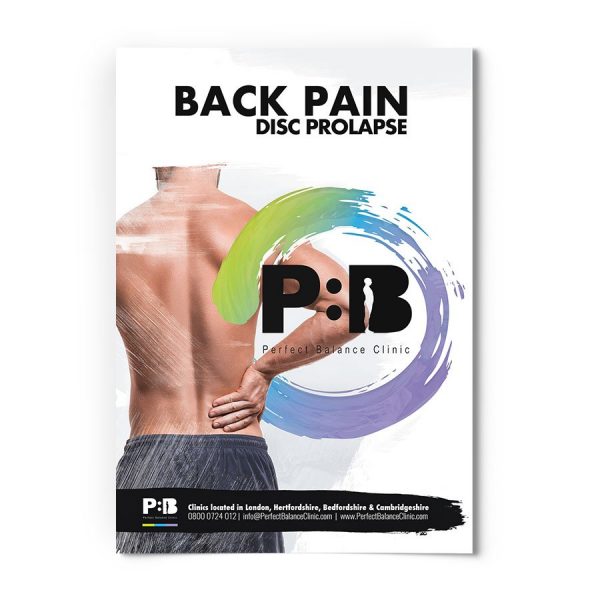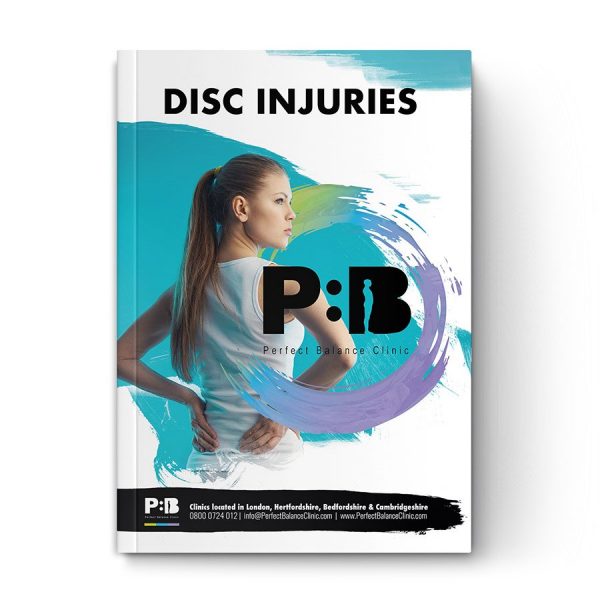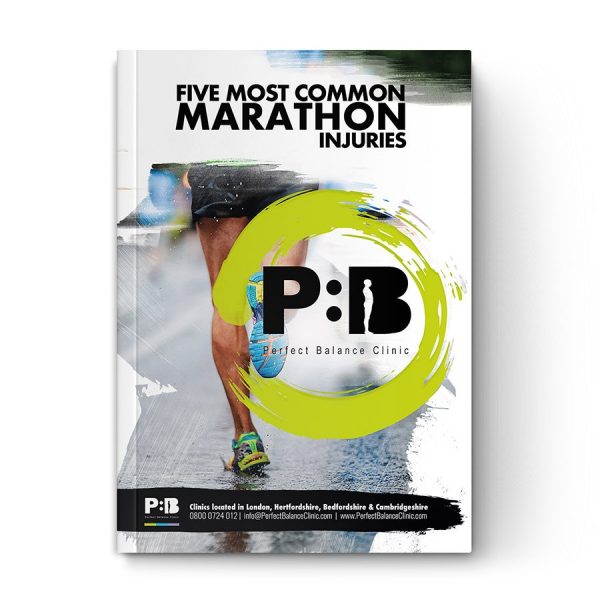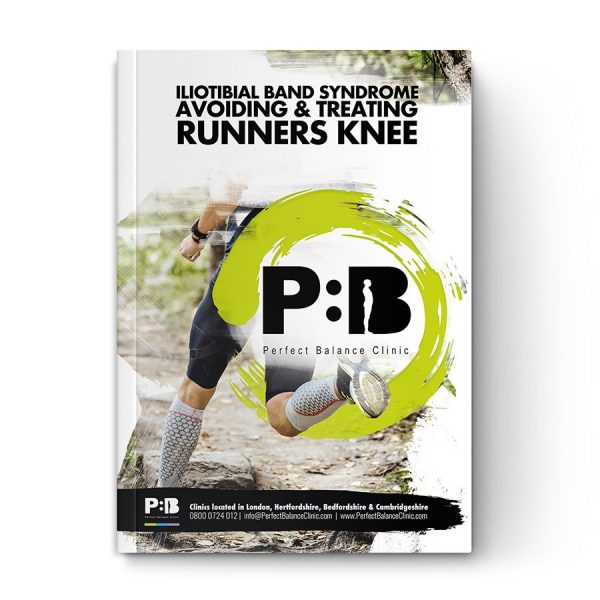As Osteopaths, we can help by giving specific, tailor-made help. In this article, we go through basic anatomy and explain how a disc in the back can prolapse and/or slip.
The intervertebral disc – The cause of slipped discs
Discs are a very important structure in the human body and altogether there are 23 of them. Their main roles are to absorb shock and to allow movement in the spine in various motions i.e. flexion (bending forwards), extension (bending backward), side bend, or rotation. From the 23 discs, there are five discs in the lower back (lumbar region) that are prone to slips compared to those of the cervical (top) and thoracic (middle) regions of the spine, which are less likely to slip but this can still happen.
The intervertebral disc (IVD) is composed of two components. These are:
- Annulus fibrosus also known by the abbreviation AF. This forms the outer edge of the disc
- Nucleus pulposus was also known by the abbreviation NP. The NP has a toothpaste-like consistency. It is seen at the centre of the disc, within the outer ring
So what is a disc prolapse (slipped disc) and how does it happen?
Disc prolapse is another word for a slipped disc. This is correct medical terminology as discs do not slip but they become bulged when they damage. When damage occurs the annulus fibrosus (AF) becomes weakened, allowing the nucleus pulposus (NP) to push further towards the outer ring of the AF (see Figure 2).
The increased pressure allows the NP to push further through the AF, and prolapse can happen. If a bulge occurs posteriorly (most likely), it could irritate the spinal nerve behind it. When this occurs, symptoms down the back of the legs are noted. This is known as sciatica. Many people complain of sciatica but there are very few real causes of true sciatica, despite the many different presentations of sciatica we see in the clinic.
The prolapse is a small bulge of NP just outside the outer ring of the disc that occurs following a sudden injury, poor slumped posture, or degenerative changes to the lumbar spine. (Research also suggests that degenerative changes to the spine start at lower lumbar spine levels.)
The highest stresses are found in the AF (outer ring). Age-related changes are most likely triggered by damage to the outer AF or the end plate4. The vertebral endplate is found sandwiched between the end of the disc and the top layer of the vertebrae.
In addition, it could be due to cell reduction in the disc, which leads to malnourishment. This can increase the stress on the NP and therefore cause low back pain2.
Disc prolapse can occur at any age, but is more common in younger people and rarely in the elderly. It is thought that slipped discs in the lumbar region (lower back) only account for 5% of low back pain; it is more common for the discs to cause nerve root irritation3. The discs in the lumbar region that are prone to prolapse (slip) are those known as L4/5 and L5/S1.
Causes: things that can cause disc prolapse (slipped disc)
The main causes of slipped discs (disc prolapses) are listed below.
- Wear and tear
- Tight piriformis muscle trapping the sciatic nerve (piriformis syndrome), which also has similar pain distribution but starts off from the buttock region; pins and needles, and numbness, may also be felt
- Poor posture
- Abnormal alterations in the spinal curvature
- Excessive lifting
- Excessive bending
- Trauma
Symptoms of disc prolapse (slipped discs)
There are a few common symptoms of disc prolapses that are key to watch out for if you think you may be suffering from disc prolapse or a slipped disc:
- low back pain
- referral pain on the posterior thigh
- pain on the outer side of the shin and into the toes. This distribution could additionally feature pins and needles, or numbness. Sometimes, motor weakness is noted in the lower limbs too.
- Weakness in the foot or foot drop
- Saddle anaesthesia
- Incontinence
What types of things can make a slipped disc worse?
There are a few things that you should really avoid when it comes to being diagnosed with a slipped disc. If you think you have symptoms that sound like a slipped disc then you should really try and avoid these following things until you can be diagnosed accurately.
- Side-bending
- Bending backwards
- Rotation
- Compression
- Lifting
- Coughing/sneezing
Treatment and relieving factors in Disc Prolapse
There are many methods to treat slipped and prolapsed discs. Although a correct medical diagnosis is key to being able to understand why you might have a slipped disc and how to ‘fix it’.
- Osteopathy and physical therapy (if it’s not too bad)
- Soft tissue massage is very good for relaxation and the reduction of muscle spasms
- Pain relief medication
- Surgery
- Epidurals to help with the nerve pain
- Medication to help with the nerve pain
Basic core and spine rehabilitation for Disc Prolapse/Slipped Discs
When they are not severe, slipped discs may be handled through proper rehabilitation and corrective exercises. Again, correct diagnosis is key, and understanding your pain is key to this. Core stability exercises can work for the early rehabilitation of spinal and disc-related conditions.
Being in small group environments and in a one to one situation can help improve your core and back pain related to slipped discs. Perfect Balance Clinic offers small group sessions and one to one bespoke rehabilitation programmes for people suffering from slipped discs.
For more information about Disc prolapse
This article was written by our team of specialist therapists at Perfect Balance Clinic. If you would like more specific advice about how our team can help you with this condition or symptoms you may be having, please complete the contact form below and one of the team will get back to you shortly.
Here are some of our E-Books to help you
References
- American Academy of Orthopaedic Surgeons,http://orthoinfo.aaos.org/topic.cfm?topic=A00534
[Accessed 9 November 2011].
- Zhu, Z., Zhao, Q., Wang, B., Yu, Y., Quian, B., et al. (2011) Scoliotic posture as the initial symptom in adolescents with lumbar disc herniation: its curve pattern and natural history after lumbar discectomy.BMC Musculoskeletal Disorders, 12(1), pp.1?8.
- Manchikanti, L., Dreby, R., Benyamin, B.R., et al. (2009) A systematic review of mechanical lumbar disc decompression with nucleoplasty.Pain Physician Journal, 12(1), pp.561?572.
- Skaf, S.G,. Ayoub, M.C., Domloj, T.N., et al. (2011) The effect of age and lordotic angle on the level of lumbar disc herniation.Advances on Orthopaedics, pp.1?6.
- Chiropractic Specialty Center Sdn. Bhd,http://www.mychiro.com.my/?page=vertebral_end-plate[accessed 6 December 2011].











A high percentage of days off work are the result of low back pain. A common self-diagnosis following internet advice is, I have low back pain and think it is a slipped disc. Can you fix it? We receive hundreds of enquiries every month which are related to a slipped disc and questions related to it. Most questions about slipped discs are pretty straight forward to answer, this article should help reduce some of the myths about lower back pain and slipped discs.